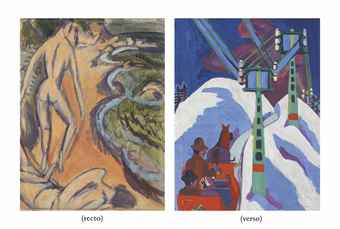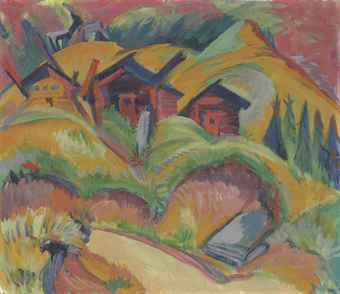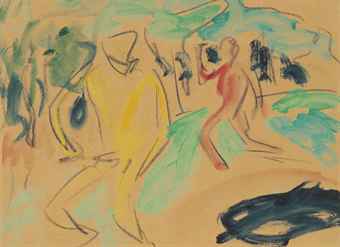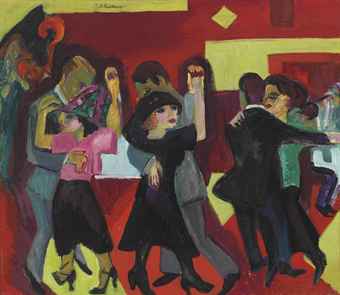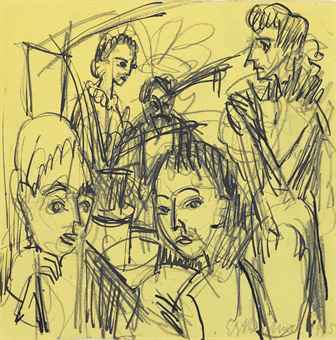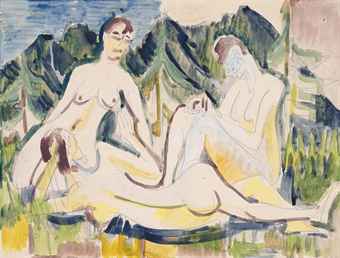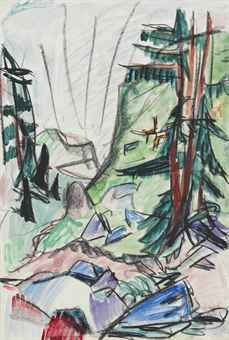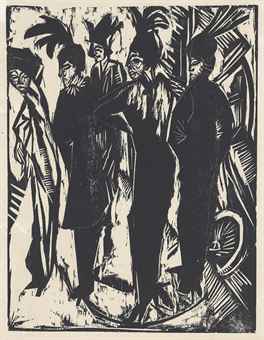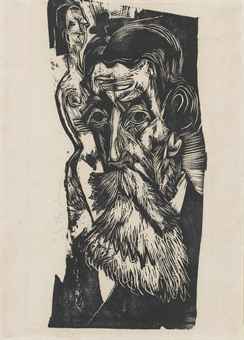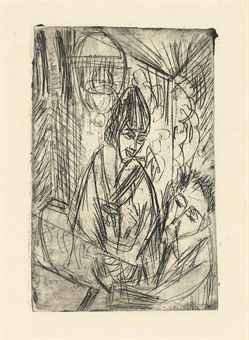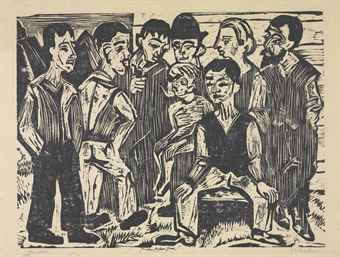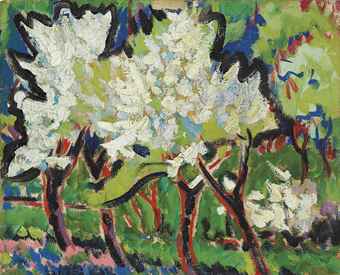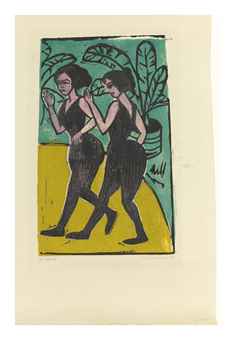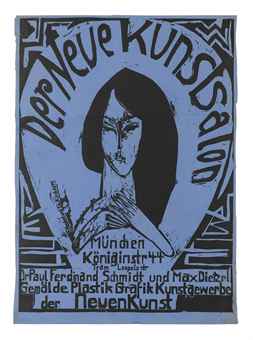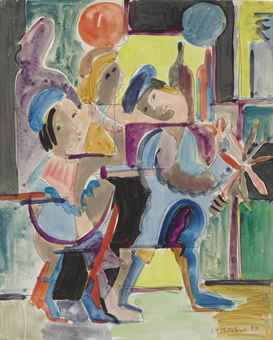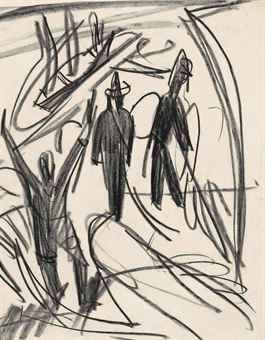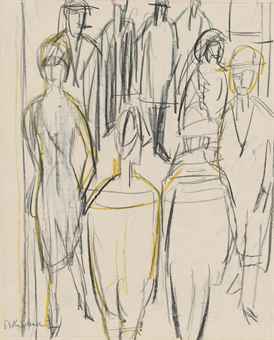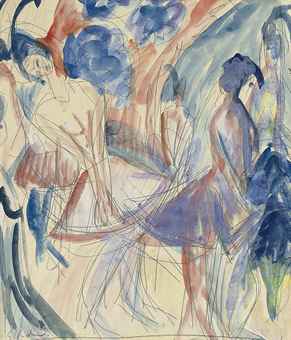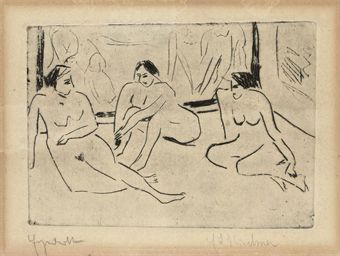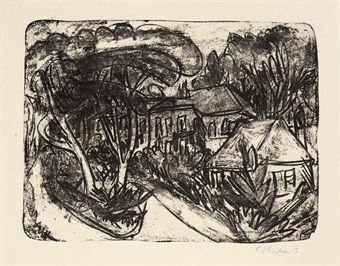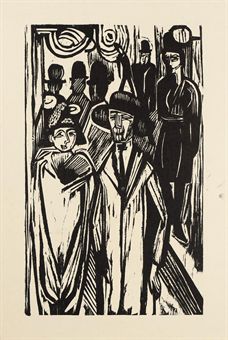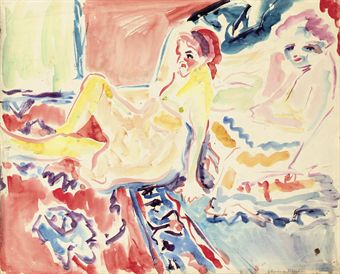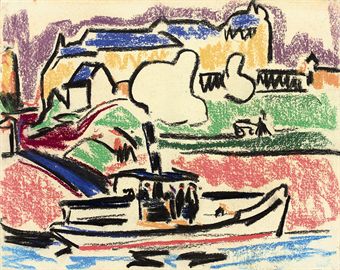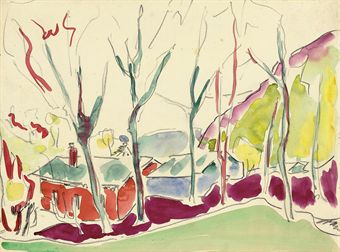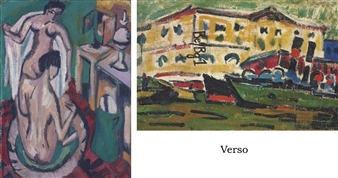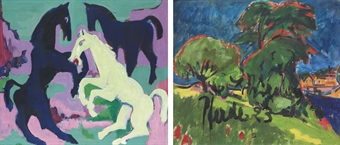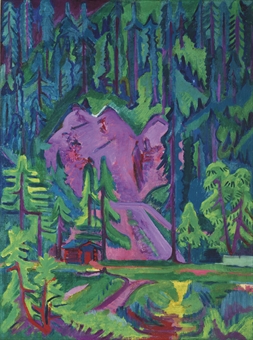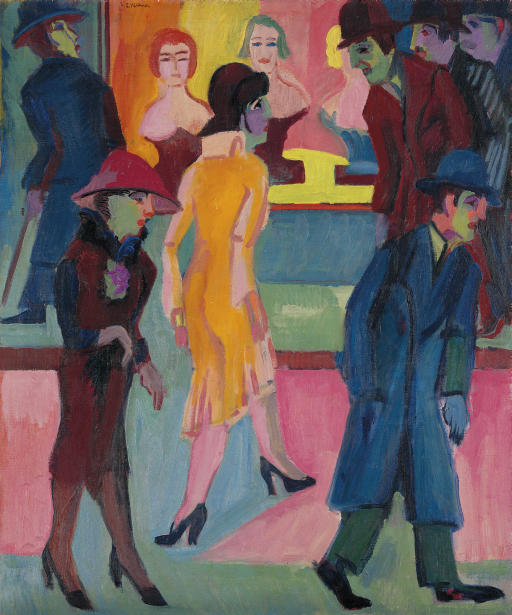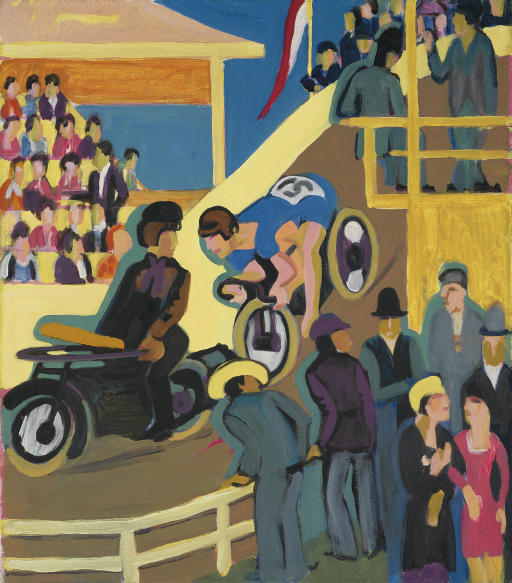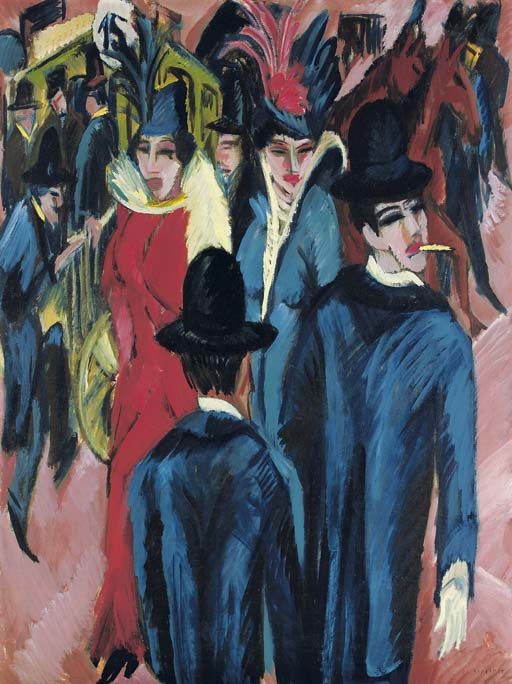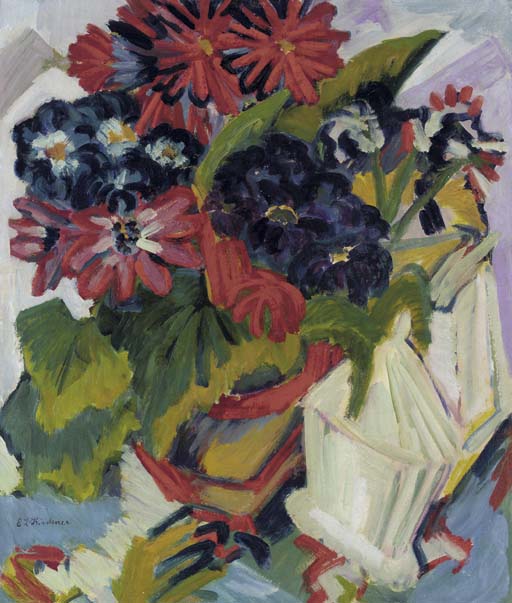One of the most prolific and creative of the German Expressionist artists, Ernst Ludwig Kirchner (1880–1938) was the leader of Die Brücke (The Bridge)—a group of young architecture students turned painters who were drawn together by their opposition to the academic art that surrounded them. This is the first major exhibition of Kirchner's work to be seen in the United States in 30 years and the first ever to be held in England. This selection of 141 of Kirchner's finest paintings, works on paper, and sculpture focuses on the period from 1908 to 1919, arguably Kirchner's most important period of work, and illustrates his stylistic breakthroughs with major masterpieces from these years. To demonstrate the artist's creative process and the fertile dialogue among his various media, paintings, watercolors, drawings, prints, and sculpture are shown together throughout the exhibition.
Sotheby's 2017
GERMAN EXPRESSIONISM
Ernst Ludwig Kirchner
Vier Akte unter Bäumen (Four Nudes under Trees)
oil on canvas
Painted in 1913.
Estimate: £3,500,000-5,000,000
Painted in 1913.
Estimate: £3,500,000-5,000,000
Kirchner’s primary concern was the representation of the
human form in its most primitive or uninhibited state, and the spontaneous
depictions of the body in Vier Akte unter Bäumen strongly reflects this
aesthetic goal. With an autobiographical subject matter, daring imagery and
vibrant palette, the work is testament to the painter’s avant-garde vision.
Painted in the final year of important artistic collective Die Brücke – whose
governing philosophy centred on freedom of expression – the work exemplifies
the zest and vigour of the movement. A large-scale, museum-quality painting, Vier
Akte unter Bäumen is appearing at auction for the first time.
Although drawn to dynamic city life in Berlin, Kirchner felt
a need to counteract it with painting trips in the countryside – spending
several weeks with fellow artists and their female companions and models,
bathing and playing nude and living in tents and huts. This experience of Free
Body Culture (Freikörperkultur) was coupled with tribal art and the
simple yet expressive forms of African sculpture. This work followed a summer
spent in Fehrman with Erna Schilling, who would remain his partner for the rest
of his life. In an almost Judgement of Paris style scene, Kirchner himself is
depicted with a high-hat and a pipe, surrounded by three female figures.
Christie’s 2016
Offered from the collection of the industrial chemist Dr Carl Hagemann, Bahnhof Königstein, 1916, is a major painting by Ernst Ludwig Kirchner (1880-1938) deriving from the artist’s very last truly expressionist period shortly before he left Germany for good, in 1917, to convalesce in Switzerland (estimate: £1.5-2 million). This is one of a rare and important group of paintings that Kirchner made in and of the landscape around Königstein in the Taunus region near Frankfurt, where he had been ordered to enter a sanatorium after being discharged from the army in September 1915. Bahnhof Königstein is one of the first of Kirchner’s paintings to have been bought by Carl Hagemann, an important friend, patron and life-long supporter of the artist and his work. Priced originally at 600 marks, this painting was the most highly priced oil that Kirchner sold to his new patron in 1916. A letter from Kirchner to Hagemann written in September 1916 reveals in what high regard Kirchner held this particular painting and how important Hagemann’s patronage was during this critical time of upheaval for the artist.
Christie's 2015
Ernst Ludwig Kirchner (1880-1938), Im See badende Mädchen, Moritzburg, oil on canvas, Painted in Moritzburg, 1909 $13,605,000 (£9,021,883)
Sotheby's 2015
Ernst Ludwig Kirchner
LOT SOLD.
16,250 GBP
Sotheby's 2014
Ernst Ludwig Kirchner
LOT SOLD.
905,000 USD
Ernst Ludwig Kirchner
LOT SOLD.
1,482,500 GBP
Sotheby's 2012
Ernst Ludwig Kirchner
LOT SOLD.
926,050 GBP
Sotheby's 2010
Ernst Ludwig Kirchner
LOT SOLD.
2,953,250 GBP
Sotheby's 2009
Ernst Ludwig Kirchner
LOT SOLD.
5,417,250 GBP
Sotheby's 2008
Ernst Ludwig Kirchner
LOT SOLD.
722,500 Swiss Francs
Christie's 2015
Christie's 2014
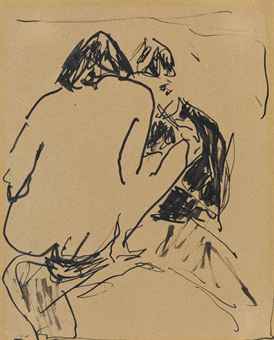
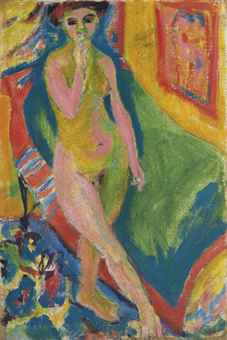
Christie's 2013
Christie's 2012
Ernst Ludwig Kirchner (1880-1938) and Erich Heckel (1883-1970)
Plakat 'Der neue Kunstsalon' (D. H 717)
Pr.£43,250($68,984)
Christie's 2011
Christie's 2010
Berliner Strassenszene (recto);
Pr.$38,096,000
National Galleries of Scotland
- Ernst Ludwig Kirchner
- Japanisches Theater [Japanese Theatre]
- 1909
- This is one of Kirchner's first paintings to depict a stage scene. It shows actors from a Japanese theatre company performing at Dresden's Albert Theatre. Theatre and cabaret scenes were extremely popular among the Brücke expressionist group. The artist's unusual viewpoint, looking down on the actors from a side angle, suggests that he may have seen the play from a theatre box. Kirchner saw an exhibition of Matisse paintings in December 1908, and this painting shows the influence of Matisse's flat areas of anti-naturalistic colour.
- Ernst Ludwig Kirchner
- Weisse Tänzerin in Kleinem Variété [White Dancer in a Cabaret]
- 1914
- Ernst Ludwig Kirchner
- Interieur mit nackter Liegender und Mann [Interior with Nude Woman and Man]
- 1924
- In about 1924, Kirchner reversed the canvas of his painting 'Japanisches Theatre [Japanese Theatre]' and painted this work. It depicts the interior of the artist’s house in Davos, Switzerland, with a seated nude and a standing man, who is most likely a self-portrait. Called the ‘Wildbodenhaus’, Kirchner’s house was decorated with exotic textiles and carpets which can be seen here, as well as his own carvings. Like many of his contemporaries, Kirchner was interested in primitive sculpture, and he carved his own large sculptures, reliefs and furniture directly from tree trunks. The totemic sculpture on the left is probably by the artist himself. This decorative painting is enlivened by large patterns and intense colours and is structured around horizontal and vertical lines.









